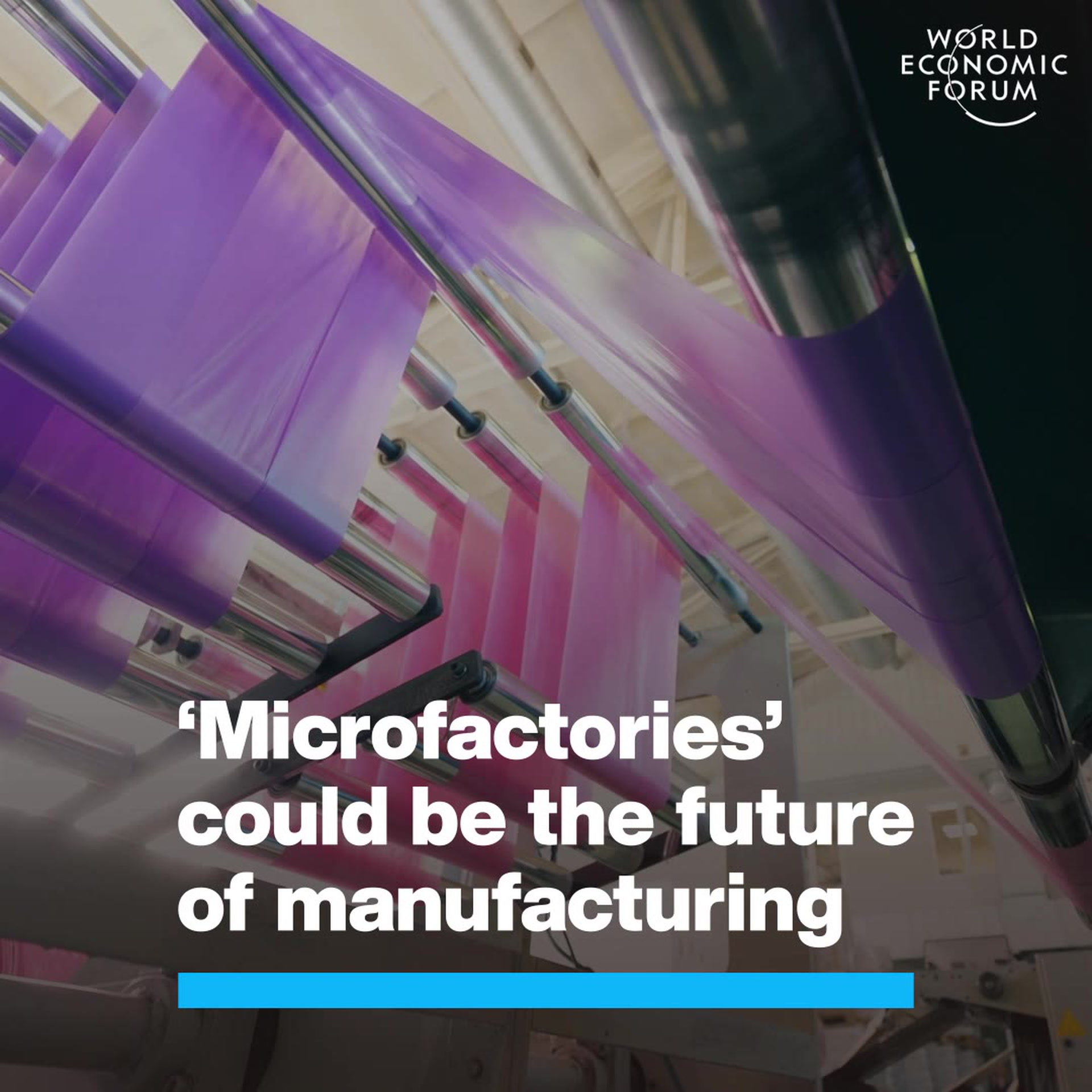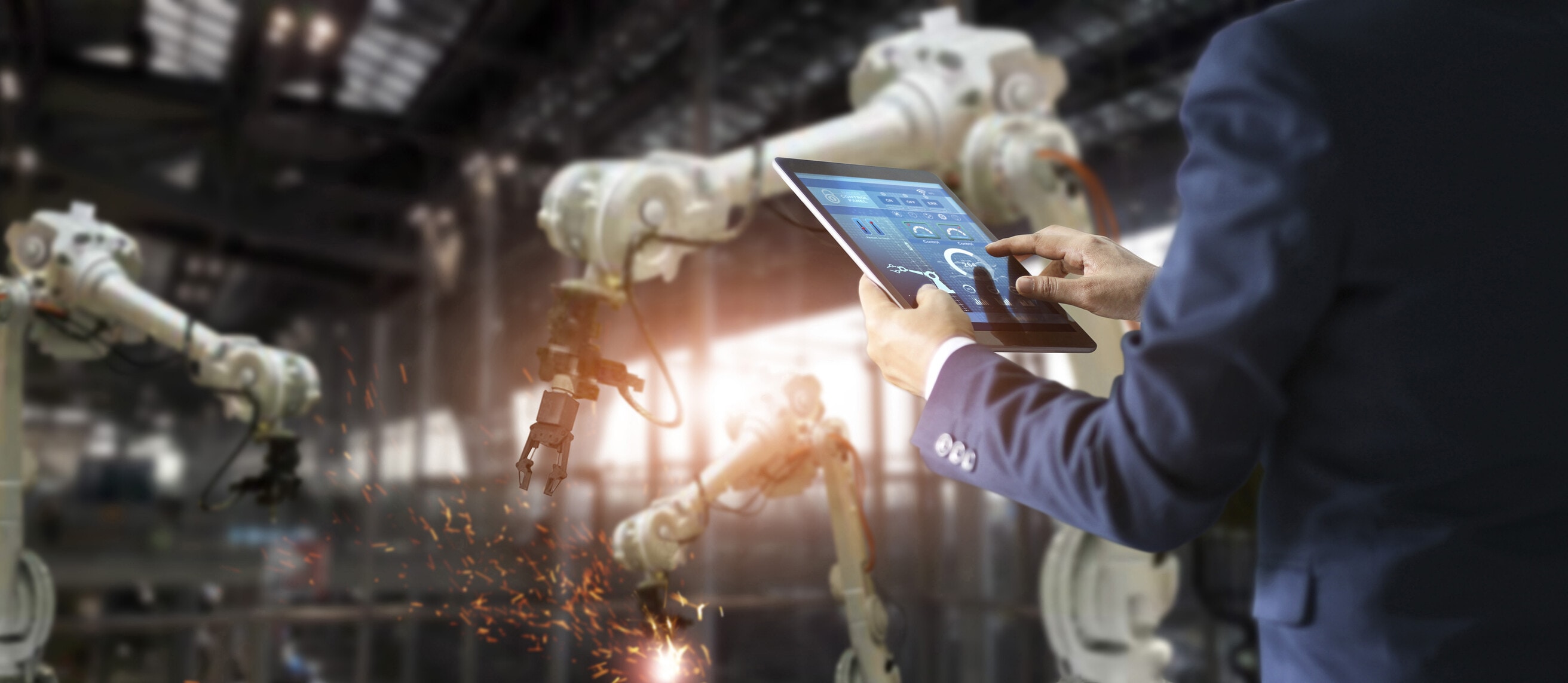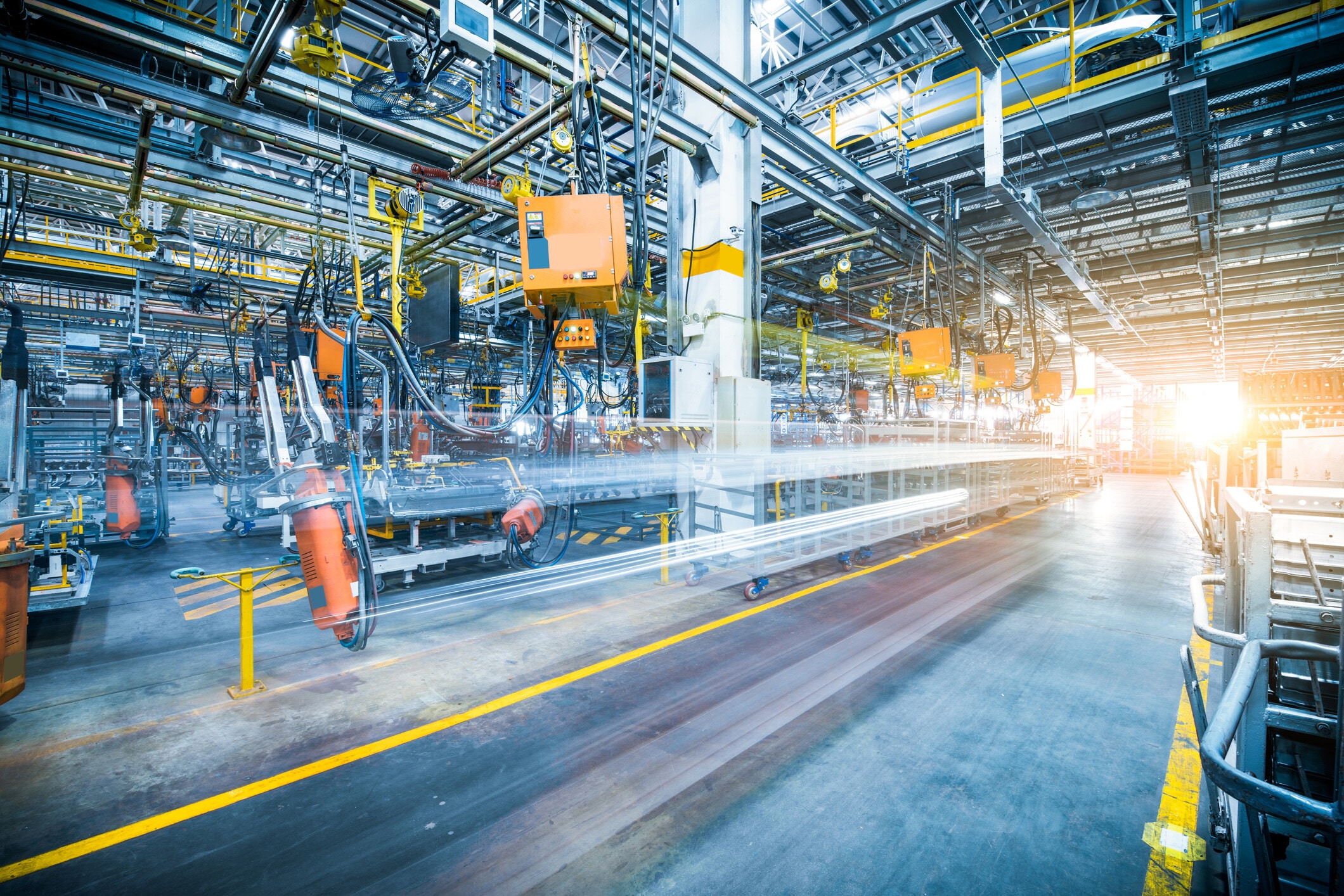New manufacturing jobs and automation aren't mutually exclusive. Here's why

Joe Biden tours a Pennsylvania metal works plant during his electoral campaign in 2020. Image: Reuters/Tom Brenner

Get involved with our crowdsourced digital platform to deliver impact at scale
Stay up to date:
Advanced Manufacturing
Listen to the article
- President Biden's executive order invests $300 billion in technology, while promising to create 5 million manufacturing jobs.
- Automation will be the catalyst for America's new economic boom.
- Even with disruption in specific industries because of automation, employment will continue to rise.
Hot on the heels of his inauguration as the 46th President of the United States, Joe Biden announced his plans to strengthen the US manufacturing sector in the midst of the worst economic downturn since the Great Depression.
Dubbed the “Made in America” executive order, it outlines the various ways Biden intends to fuel economic recovery in the wake of the pandemic, including investing $300 billion in R&D and advanced technology, while creating a whopping 5 million jobs in manufacturing. To many, these two things seem at odds with one another, considering the anti-human reputation that has plagued technology (specifically, automation technology) since the first Industrial Revolution. It’s a distrust that persists: Who could forget Trump’s plans to bloat factories with human workers, without as much as a whisper about tech/automation’s role in the sector?
But Biden’s aim to both invest heavily in tech and job creation isn’t some idealistic future dreamed up in a political war room. I believe he is on to something that critics and sceptics may be too afraid to admit: automation tech is the catalyst for economic growth in our country.
In fact, arguments against automation largely ignore the past; any glance in the history books will prove that it has in fact been fueling the economy since its inception. Let’s first consider the heart of the issue: job growth. Back when computers were first introduced in offices, they displaced some clerical staff, but over time they also led to the introduction of an entirely new professional category of technical roles like computer technicians and IT professionals.
Fast forward to today, and technical occupations are the fastest growing labour category in the US. Plain and simple, automation creates more jobs than it destroys. Indeed, this was a projection made by the World Economic Forum several years ago, noting that by 2022, automation will lead to the creation of 133 million new jobs despite a loss of 75 million. In fact, employment in total will continue to rise even if automation disrupts specific industries.
Automation also powers product innovation in a way no other tech capability can by completely changing the economics of how things get made. Thanks to the proliferation of advanced tech like computer vision, machine learning, adaptive robotics and software on factory floors, manufacturing is no longer a clunky and expensive process requiring a massive financial investment or heavy equipment.
Tech investment in the space has powered smaller, nimbler factories that can quickly and easily spin up and scale new products or adjust existing ones. Over time, barriers to entry will continue to lower, so that anyone with a good idea can turn that idea into a tangible, marketable product. When more people are given the tools and the opportunity to engage in the manufacturing process, it opens the door to higher quality products and boundless innovation.

Job growth and innovation aside, tech investment in manufacturing has several other important economic advantages. At its core, automation is a productivity booster: McKinsey predicts automation could raise productivity growth globally by 0.8 to 1.4% annually. This increase in productivity results in a number of positive outcomes: higher output, which results in higher margins for companies; higher wages for employees; and lower prices for consumers.
Automation also has the unique power to monetize a previously unprofitable sector. Consider the example of the washing machine: The introduction of the common appliance created a profitable business out of what was previously a household chore (unpaid time cleaning clothes), as washing machine manufacturers and laundromats took off and created a booming industry.
In many industries, the loss of jobs to automation primarily impacted unpaid workers, with minimal (if any) negative impact on overall employment across the country. For example, within the agriculture industry the majority (82%) of the 7 million farmers who lost jobs to automation between 1950 and 2000 were unpaid family workers. Meanwhile, the loss of unpaid work in this industry had zero negative impact on overall employment in the country: By 2000, the number of employed persons in the country (137 million) far exceeded that same category in 1950 (59 million. Automation in agriculture has also been critical to increasing productivity to meet the needs of a growing population. In sum, automation is a powerful economic stimulant (so powerful, in fact, that some estimate it’ll add $1.2 trillion to US GDP over the next five years).
Trump’s idea that the health of the manufacturing sector should be measured only by the number of humans working in factories was gravely misinformed. While both Trump and Biden prioritized job creation in their manufacturing policies, it’s Biden who rightly acknowledged technology as the mechanism to achieving this goal. Tech investment and job creation aren’t mutually exclusive goals; rather, tech/automation is the catalyst to enable meaningful job growth in a sector ripe for change, while also stimulating the economy at large.
Fortunately, Biden is also taking the appropriate measures to ensure displaced workers can successfully transition to new roles through an investment in high-quality training programmes. One year into the Great Lockdown, and with a new president at the helm, I believe we’re (finally) on the right track.
Don't miss any update on this topic
Create a free account and access your personalized content collection with our latest publications and analyses.
License and Republishing
World Economic Forum articles may be republished in accordance with the Creative Commons Attribution-NonCommercial-NoDerivatives 4.0 International Public License, and in accordance with our Terms of Use.
The views expressed in this article are those of the author alone and not the World Economic Forum.
Related topics:
The Agenda Weekly
A weekly update of the most important issues driving the global agenda
You can unsubscribe at any time using the link in our emails. For more details, review our privacy policy.
More on Advanced ManufacturingSee all
Stephanie Wright, Memia Fendri and Kyle Winters
February 13, 2024
Maya Ben Dror and Lena McKnight
January 31, 2024
Dr. Matthew Putman
January 17, 2024
Kyriakos Triantafyllidis and Andreas Hauser
January 16, 2024







